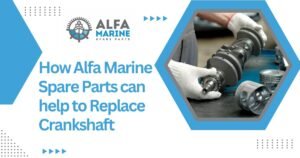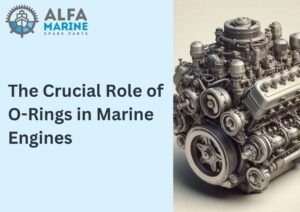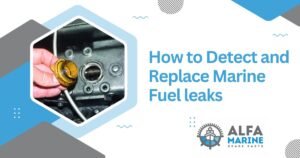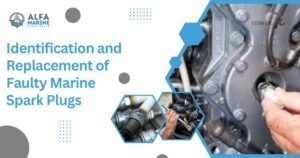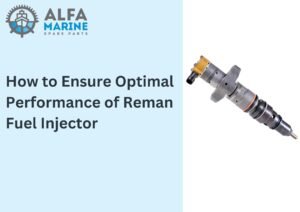Air Circuit Breaker a.k.a. ACB Control or main circuit breaker is one of the prime safety equipment installed in the electrical control room in the ship. This electrical device blocks high current and air at high voltage (800 Amps – 10K Amps) to prevent overheating and short circuits in low voltage circuits.
In this blog post, we discuss the importance of air circuit breakers in a marine vessel and compliance with SOLAS Regulations.
Where is the Air Circuit Breaker (ACB) Located
An air circuit breaker is housed in a surrounding chamber (arc chute) on the synchronisation panel. It is a type of control switch denoted as ACB CONTROL on the main switchboard.
The synchronisation panel connects all the generators into a single electrical grid for coordinating power supply. There can be manual or automated systems to control the ACB switches to on and off mode depending on the voltage, load, and other parameters. The air circuit breakers connect all input and output power sources to interlinked terminals (busbars).
SOLAS Regulations for Maritime Electrical Installations – An Overview
The International Convention for the Safety of Life at Sea, popularly known as the SOLAS Convention, is a treaty drafted by the International Maritime Organization (IMO) adopted in 1914. It mentions the regulations about construction, operation, maintenance protocols, and safety measures for marine vessels.
Chapter II-1 Part D lays a definitive guide to the SOLAS Regulations on marine electrical installation.
Regulation 41 Part 5.1.3 states that it is mandatory to subdivide the main busbar equally into at least 2 or more parts for regulating electrical power supply from the main source to the propulsion system. For overall safety, it is necessary to connect these subdivided parts to compatible circuit breakers. This is also applicable to all generator connections.
SOLAS Recommendation on ACB Control in Marine Vessels
The air circuit breakers on a marine vessel are subject to numerous safety protocols. Here is an overview of safety factors associated with circuit breakers:
#1. Control Overloads
ACB regulates the required power flow when a large volume of current accumulates at the circuit. It safeguards machinery and electrical installations from critical overcurrent.
#2. Prevent High Current Flow and Short Circuits
The prime function of the circuit breakers in the synchronisation panel is to eliminate short circuits. It obstructs heavy current flow to prevent fire breakouts and protect against equipment damage.
#3. Protect from Ground Faults and Shocks
When a live conductor encounters the earth’s surface, it can cause severe shocks. The air circuit breaker protects the electrical systems from earth faults.
#4. Protection During Low Voltage
When the voltage levels drop, the circuit breaker prevents a low-voltage power supply to the equipment to protect against critical damage and malfunction.
#5. Prevent Reverse Power
If the switchboard is not connected and the generator starts operating, the current can flow in the reverse direction. ACB controls prevent the reverse flow of energy to protect the generator from sudden blackouts.
#6. Arcing Contact
The ACB acts as a medium of arc extinguisher. It creates a low-voltage arc instead of a voltage supply to interrupt the arc.
#7. Preferential Trip Configuration
This type of circuit breaker is used to remove the non-essential load or circuit during partial power failure or overloading.
Are you looking for top-quality electric parts and accessories for your vessel?
Alfa Marine Spare Parts offers a full suite of electrical accessories, electronic parts, instruments, control modules, and more. Visit our web catalogue for the stocks in our inventory. Alternatively, you may contact us with any part number or product name. Our knowledgeable staff will assist you through the purchase.


